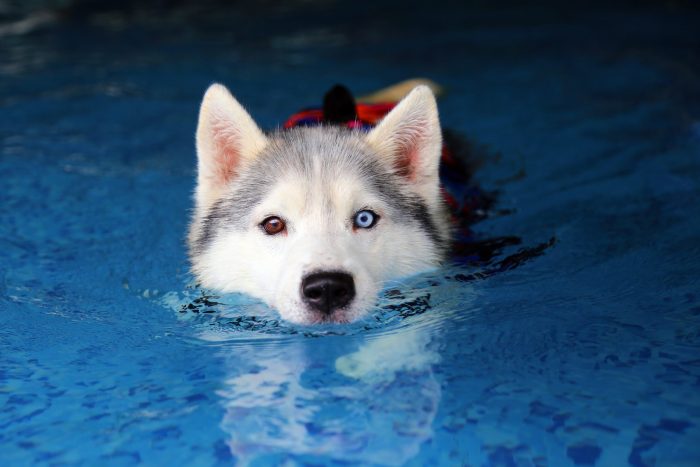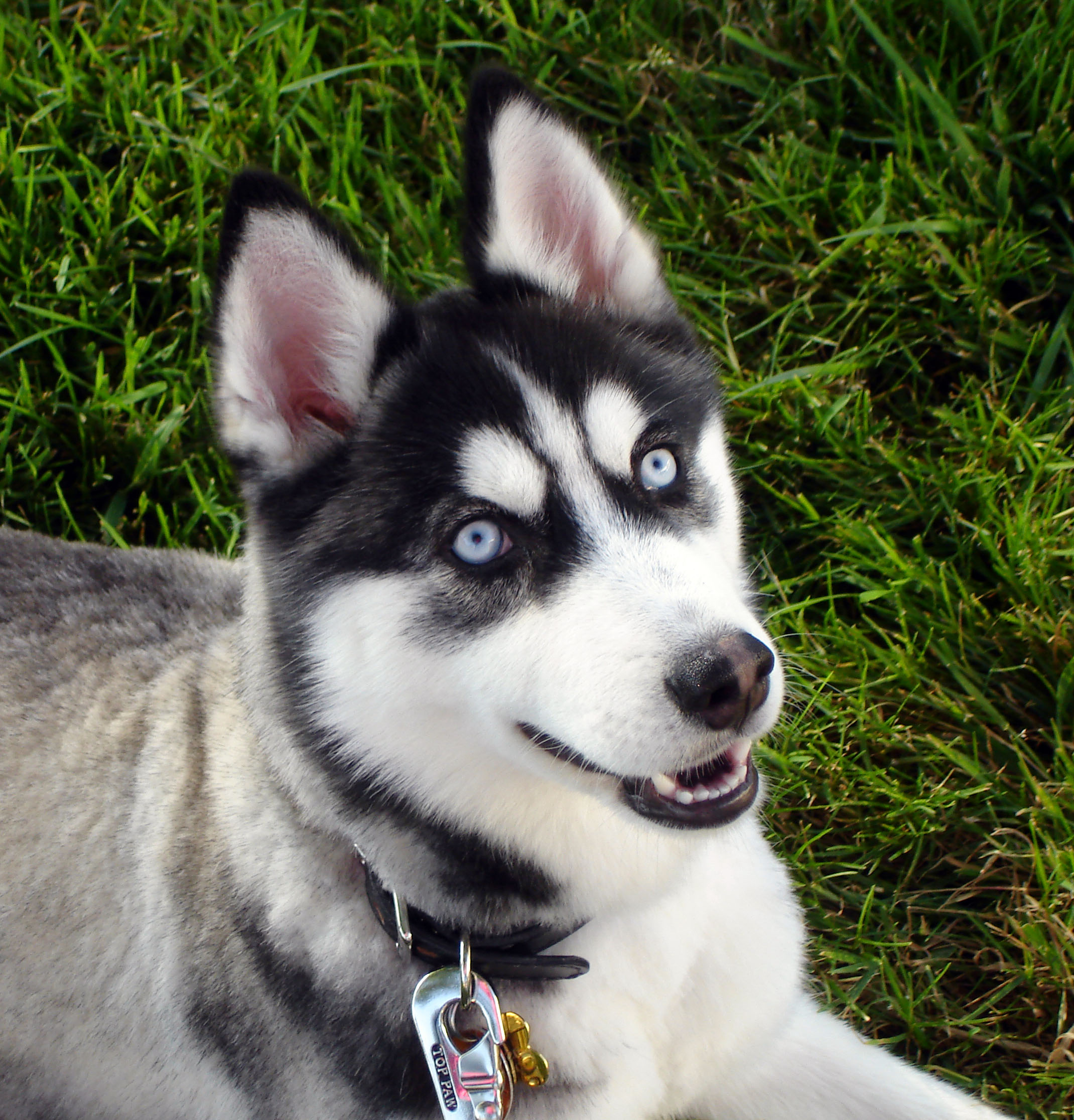
A little mood music, please:
Ice blue eyes are seen in many Siberian Huskies, one of the few breeds for which there is no set standard for eye color: From the AKC standard; “Eyes may be brown or blue in color; one of each or parti-colored are acceptable.”
They are one of the most common eye colors in the breed, some 40% of the breed known to have them, the shade of blue varying between dogs.

Photo by Pamela Carls shared under the Creative Commons Attribution-Share Alike 2.0 Generic license.
Interestingly, research by Adam Boyko and Aaron Sams of Embark Veterinary Inc. showed a connection to a mutation of the ALX4 gene, which leads to a decreased pigment production in the eye. In other words, those distinct blue eyes come down to a gene mutation. Because blue eyes are a recessive gene, both parents need to carry the gene for a puppy to have blue eyes. If one parent dog doesn’t carry it, the puppy will probably have brown eye, another common color in the breed. Huskies with lighter colored coat on their faces make brown eyes stunning, and in both cases, we often notice these eyes because Huskies often have a rim of dark skin around their eyes (a function of reflecting the glare of snow and snow in their native environment of Siberia) which make those eye colors pop with intensity.
When a Sibe has eyes like the photo of the dog in the pool, that dog belongs to a small portion of the breed population known to have heterochromia, more commonly referred to as bi-colored or bi-eyed. Heterochromia is the result of an excess or deficiency of melanin – the pigment responsible for the color of the iris of the eyes. It doesn’t affect the health of the dog, and has nothing to do with cross breeding. Approximately 15% of purebred Siberian Huskies have heterochromia, one of the rarest eye colors that a husky can have.
To review, approximately two out of five Huskies end up with blue eyes, another two out of five have some shade of brown eyes. Of the remaining 20%, one will find around those 15% that are bi-colored, and that leave us with an even rarer find, Huskies that have a mix of brown and blue within one eye or within both eyes. Only 5% of Huskies have parti-colored eyes.
We’re fond of the legend that says that dogs with two different color eyes can view heaven and earth at the same time. Another legend holds that heterochromatic dogs are natural protectors and considered spirit dogs. Some in the sled racing community believe that sled dogs with heterochromia are faster than dogs with the same color eyes, but if there’s evidenc to support this, we haven’t found it.
Image by Wasitt Hemwarapornchai/Vecteezy
